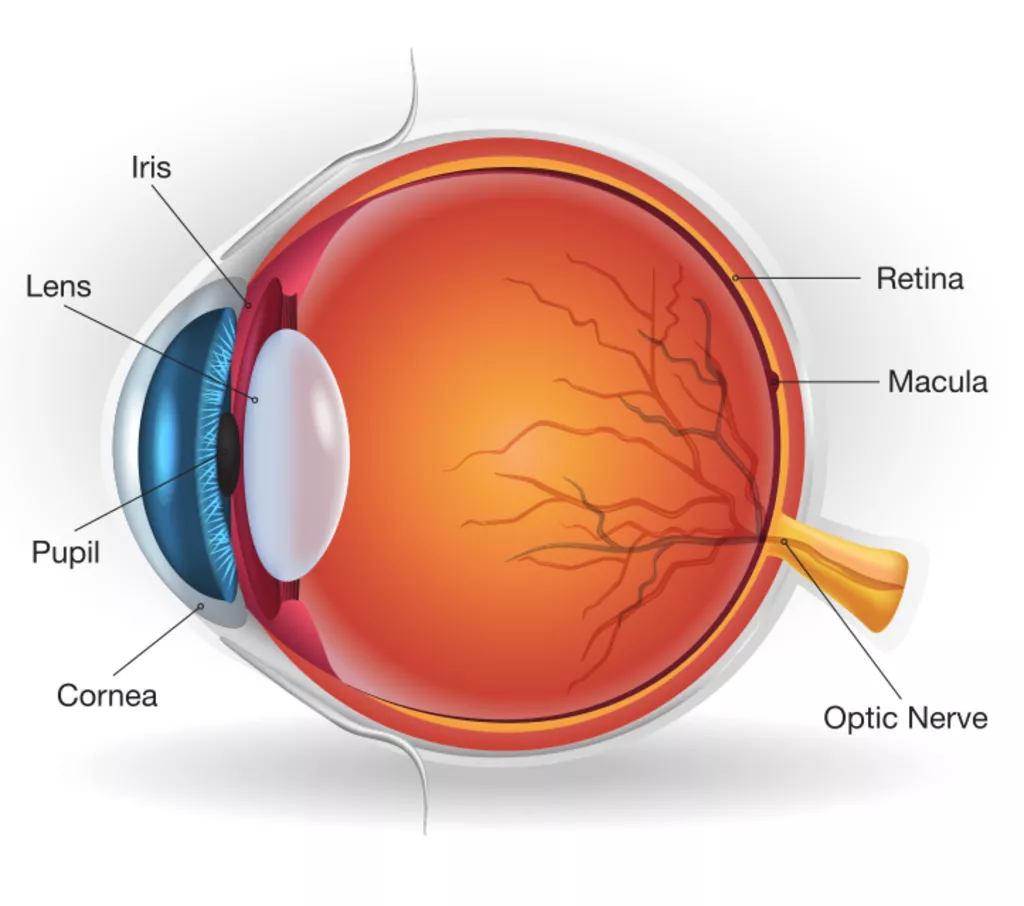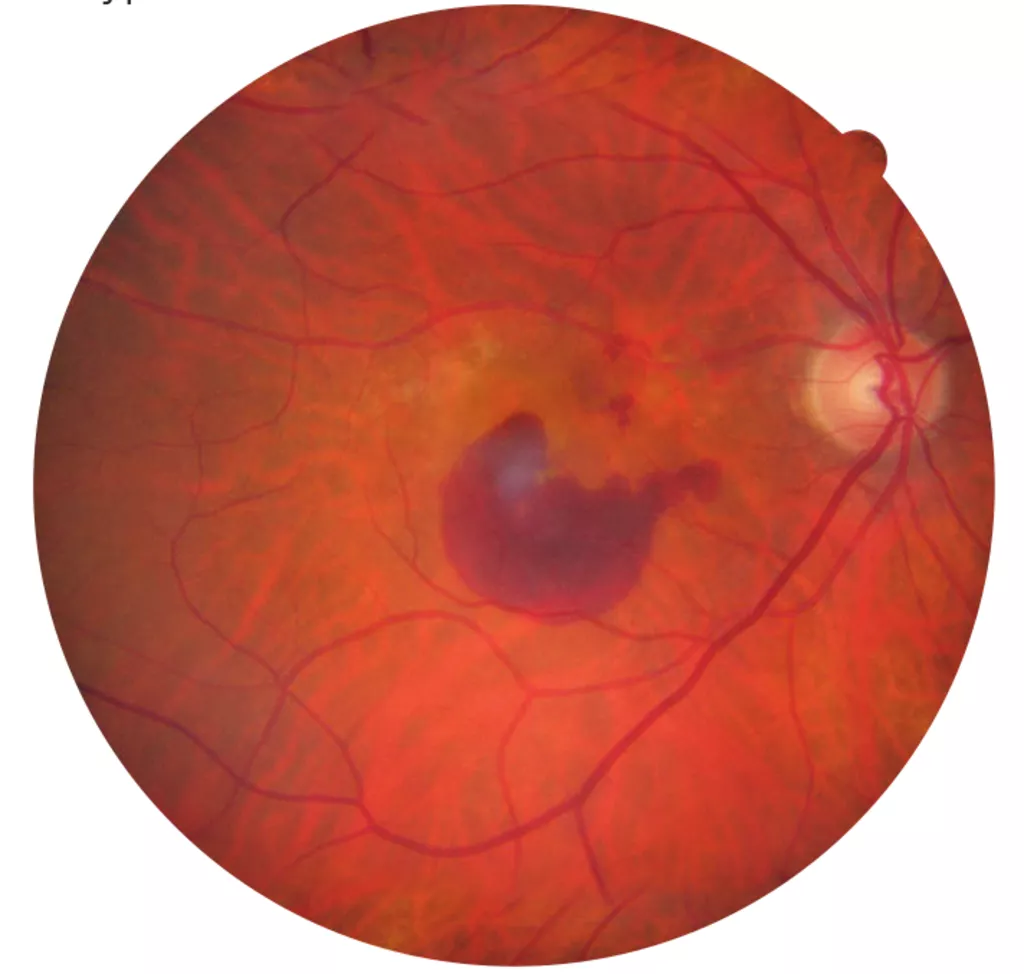Age-related Macular Degeneration, or ARMD, is the leading cause of vision loss in the western world, and typically affects people over 60 years of age. Eye Doctors surgeons are experts in the diagnosis and treatment of ARMD.
What does the retina do?
The retina is the light-sensitive nerve tissue lining the back of the eye. Like film in a video camera, the retina continually ‘take pictures’, then sends signals through the optic nerve to the brain, producing vision. The central part of the retina, which generates fine detailed vision, is known as the macula. The retina is nourished by oxygen-rich blood that is brought to it be arteries and then drained away again by veins.

What is the macula?
The macula is part of the retina at the back of the eye, in the direct line of central vision. Its function is to gives us colour vision and fine detailed vision for tasks such as reading.
What causes ARMD?
The cause of ARMD is not fully understood but, as the name implies, it increases with age and may be more common in some families. However environmental factors such as smoking, diet and blood pressure may also contribute.
What are the symptoms of macular degeneration?
Finding it difficult to read and see small detail are warning signs to be aware of. The development of distorted vision, where straight lines appear bent, is an important symptom that needs expert evaluation within days.

What are wet and dry ARMD?
“Dry” ARMD causes a very slow loss of central vision clarity due to wearing out of the macula. This condition uncommonly leads to blindness. “Wet” ARMD however, often causes rapid loss of central vision due to abnormal blood vessels developing underneath the retina, which can leak and bleed. This may result in retinal scarring, with permanent vision loss. Both types of ARMD often occur in both eyes and sometimes the dry type can change into the wet type.
Active “wet” age related macular degeneration with bleeding and scar in the centre of the retina.

How is ARMD detected?
An eye specialist can detect active disease and those at higher risk of progressing to loss of vision. After checking the vision your Eye Doctor will dilate the pupil with eyedrops and examine the retina. Further tests may be required to identify the extent of the disease.
What is an OCT?
Optical coherence tomography (OCT) is a light scanner that can image the retina in great detail, providing useful information for detecting and monitoring ARMD. At Eye Doctors we have the latest technology high definition OCT scanner that can often show macular disease even before it is visible with normal examination techniques. OCT scanning just takes a few minutes and is simple and painless to do.
OCT image showing normal macula compared to age related macular degeneration where the retinal surface is being distorted giving distorted vision.
What treatments are available?
The
good news is we now have a highly successful treatments for active
“wet” ARMD. The key is early detection and treatment to get the
most benefit.
Medications that are injected into the eye can
reduce retinal swelling, leading to visual recovery and minimise the
development of scarring in the majority of patients in the earlier
stages of the disease. These medications, called Vascular Endothelial
Growth Factor (VEGF) inhibitors include Avastin (Bevacizumab),
Lucentis (Ranibizamab) and Eylea (Aflibercept). Eye Doctors surgeons
have extensive experience with these medications and are
investigators on a number of international studies treating ARMD.
In
addition, your Eye Doctor may give you nutritional advice, or
recommend specific vitamin supplements that have been shown to reduce
the risk of ARMD progression.

